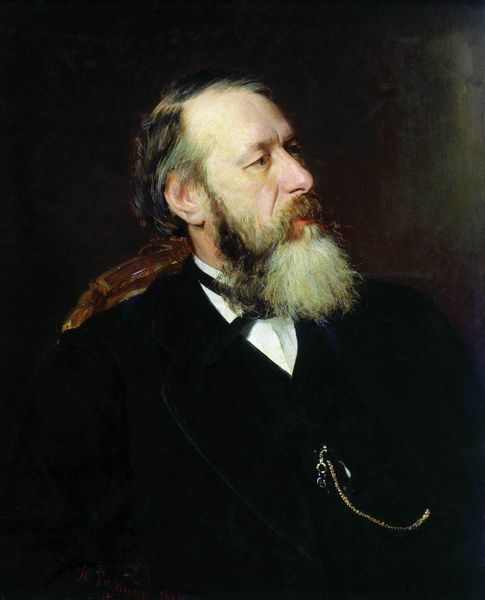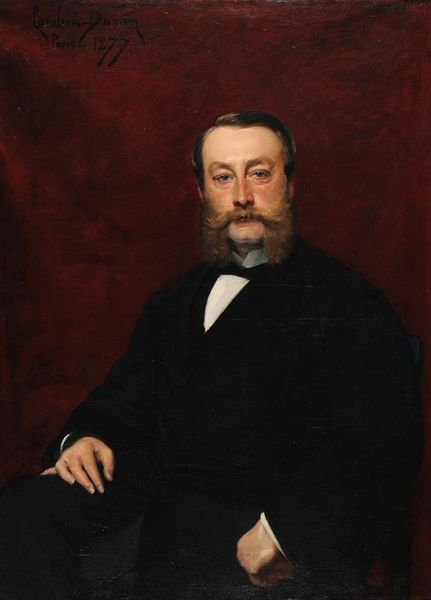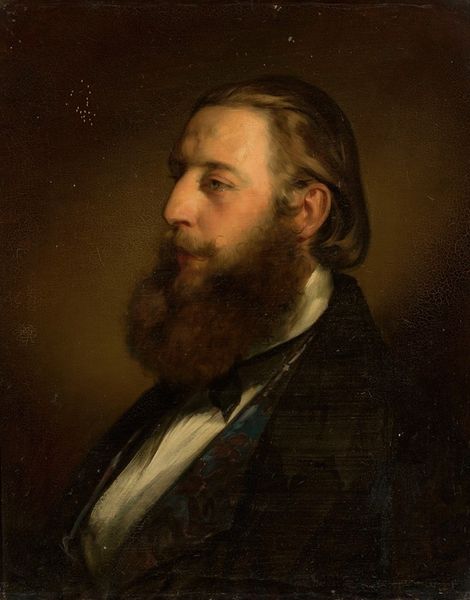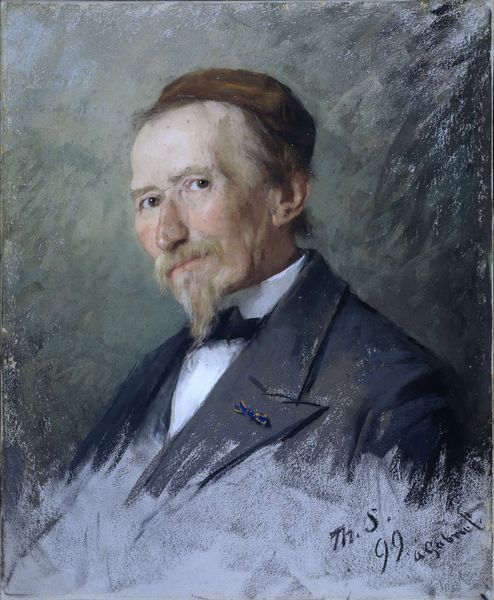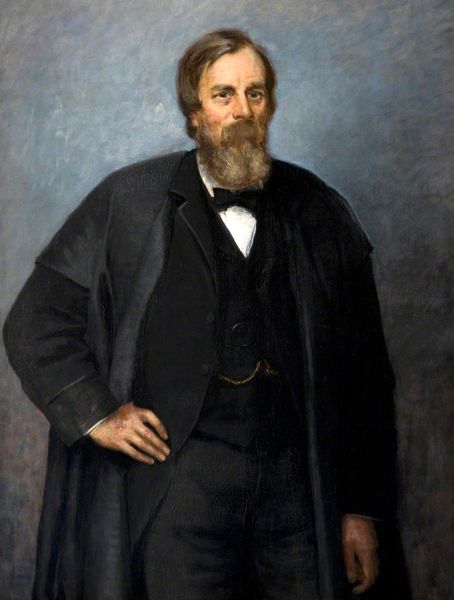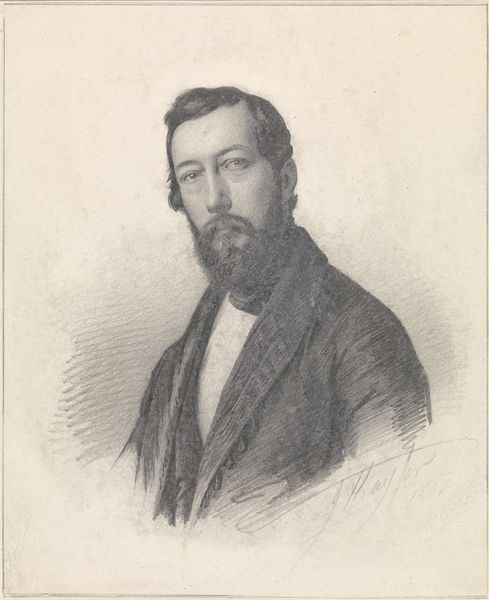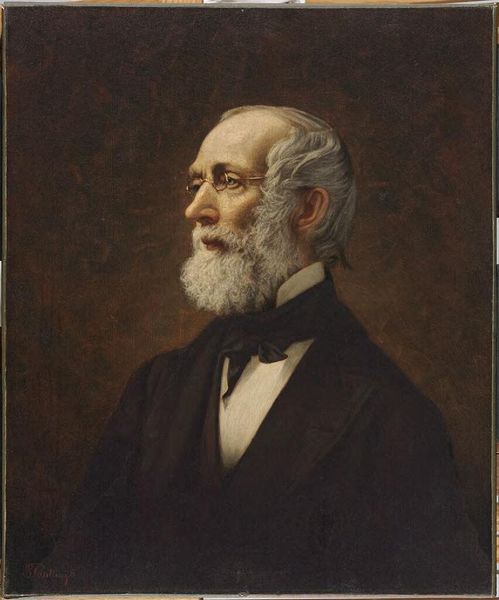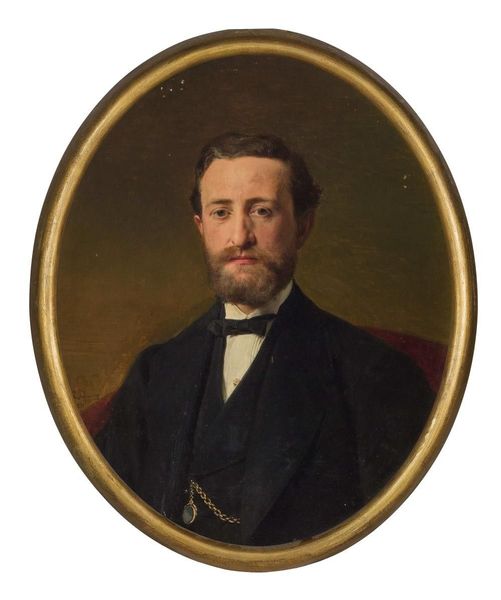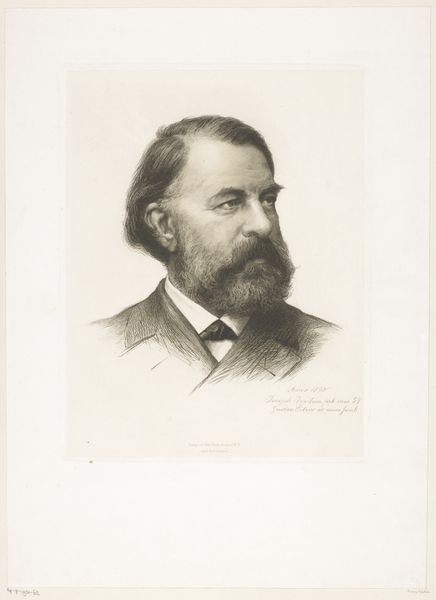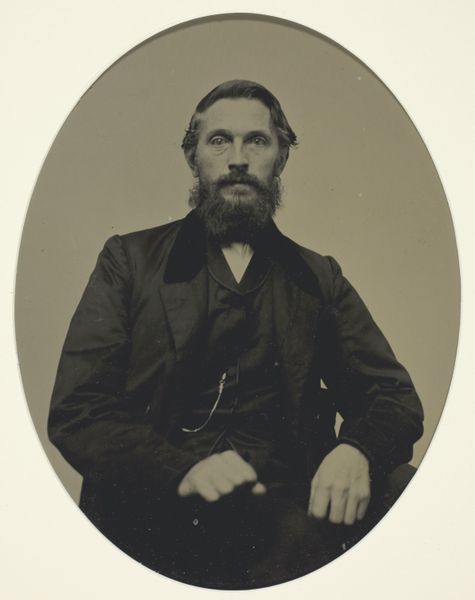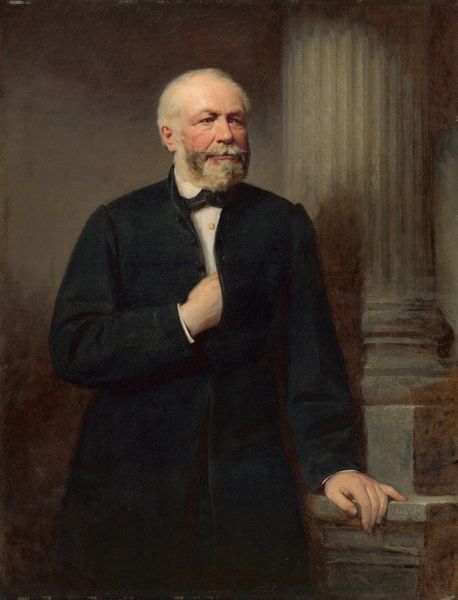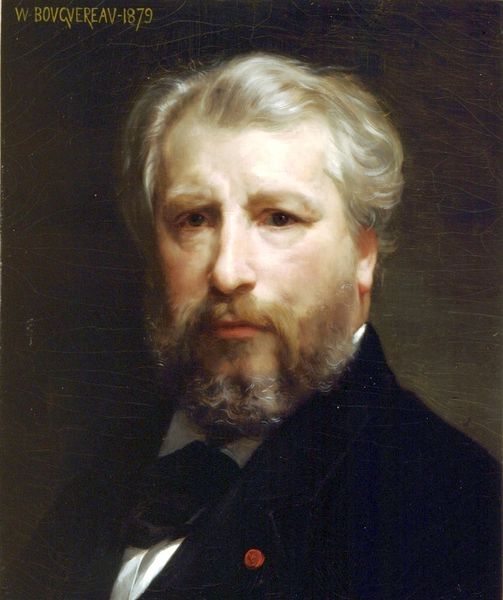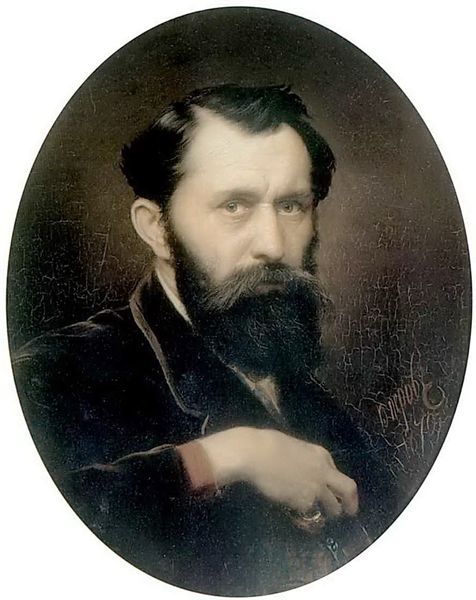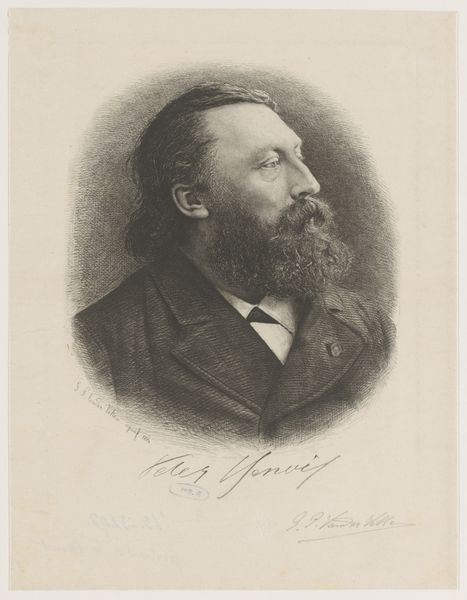
Copyright: Public domain
Curator: Ivan Kramskoy painted this portrait of Yuri Samarin in 1878. A somewhat imposing figure, don't you think? Editor: Definitely, I immediately noticed his rather assertive, if composed, gaze. The painting technique itself contributes. It's almost monochromatic and has been built up with very thick oil layers. Curator: Kramskoy was deeply invested in realism, seeking to capture the psychological depth of his subjects, and Samarin, a prominent Slavophile intellectual, embodies this commitment. Editor: Right, but I'm thinking also of how Kramskoy handles his material here. The heavy application of the paint itself speaks to something – perhaps a societal weightiness reflected in Samarin’s social role. It gives a real feeling of weight, the almost somber tones suggesting he’s involved in the complex issues of the day. You almost feel as if the brushstrokes are building more than a likeness, it’s a monument to his purpose. Curator: Yes, Samarin was actively engaged in advocating for social and political reform in Russia, particularly concerning the emancipation of the serfs. So there’s the sitter but also his socio-political reality captured with the likeness. The texture certainly seems more than just an aesthetic choice. Editor: Exactly! Look at the handling of the beard, in comparison to the restraint in the handling of the black woollen suit; it conveys this wonderful contrast, that the artist thought deeply about the material reality. Also it's an age of Industrial revolution which will make synthetic paints like madder red or viridian easily accessible! I'm pretty certain this had an impact on artist choices, also about canvas supports to ensure an aesthetic and social function. Curator: The beard definitely anchors his personalty; there's almost an opposition there between the beard, and his stare. They demand respect and hint at inner complexity. Editor: Overall the visual texture and darkness emphasize the seriousness of Samarin’s persona and contribute to this sense of responsibility that clearly impacted how he approached this moment. What do you think, what have we missed? Curator: Considering that this portrait provides an insight into both individual identity and the historical and social tensions within 19th-century Russia. Editor: It has been interesting considering these artistic and historical perspectives. This work offers a wealth of analysis!
Comments
No comments
Be the first to comment and join the conversation on the ultimate creative platform.
